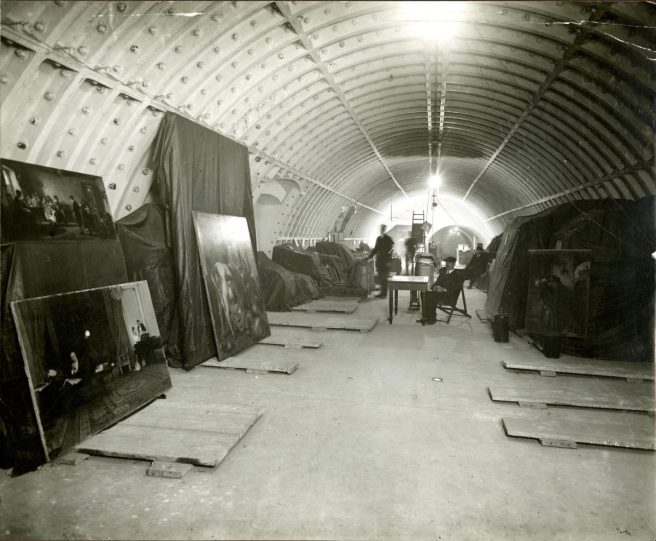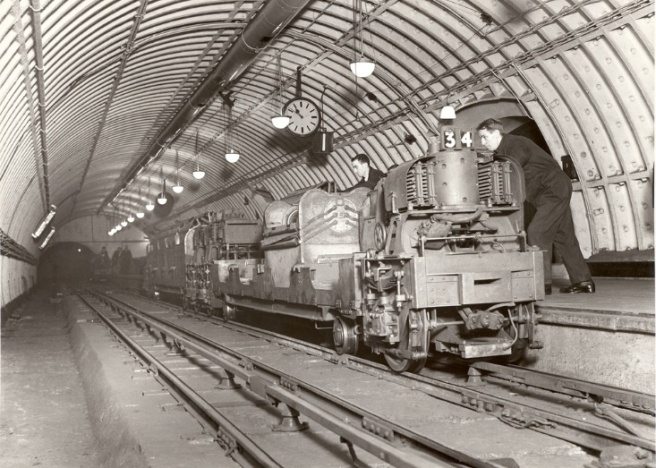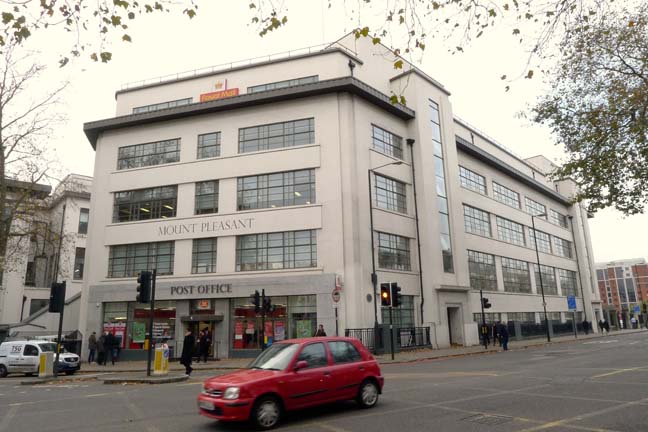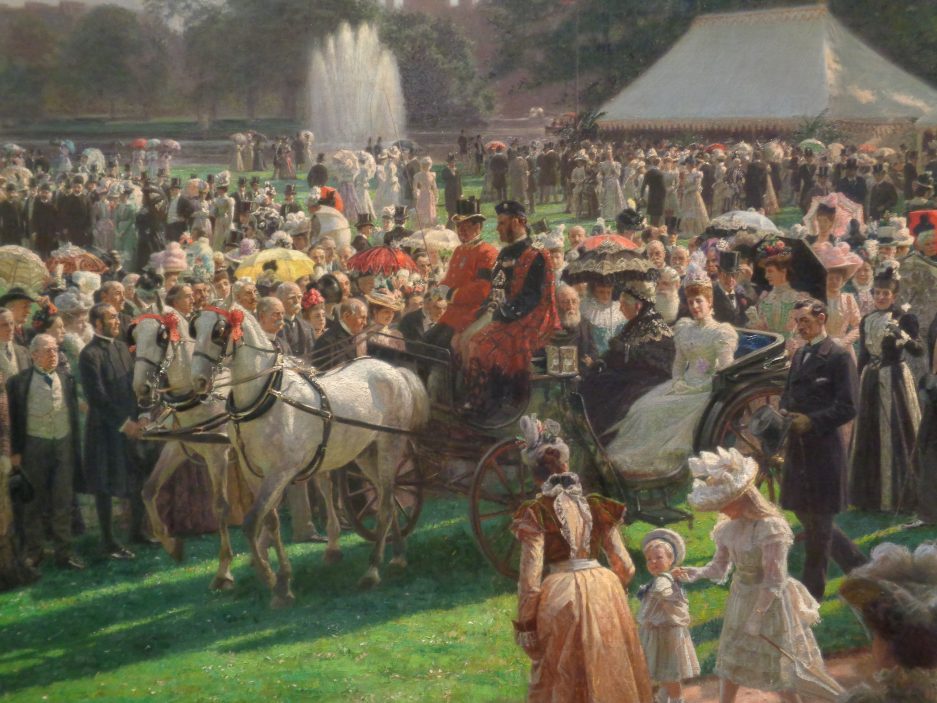Deep under the streets of London and its snarl of urban traffic is a virtually unknown railway that for 75 years was an artery in Britain’s postal network. Seventy feet below ground, the Post Office railway (more commonly known as the Mail Rail), carried post from Paddington to London sorting offices from 1923 until it was finally abandoned in 2003 due to changing technology. In its heyday, the two-foot, narrow-gauge driverless railway called from Paddington to Mount Pleasant and eight stations along the way, in 26 minutes. The driverless, electric trains trains operated for 22 hours a day every weekday, with the other two hours used for maintenance work on 23 miles of lines, carried 30,000 items a day and ran every five minutes in peak times. The Post Office railway was a unique solution to the problem of transporting mail across an increasingly congested city and was designed solely to move letters and parcels.

The idea of transporting mail in tubes began many years before the Post Office Railway was even thought of way back in 1853 the first ever mail tube went in to service. Although it was only 225 yards long and only 1.5 inches in diameter and used the equivalent of a giant vacuum cleaner to power the system it did prove very successful. Over the next few years various forms of this system were built and tested, even to the point of carrying passengers.
The Post Office set up a team to look at the possibilities of building a larger system between two of their buildings that was abandoned as too expensive. In 1859 the Pneumatic Dispatch Company was formed and built a tube to carry mail but despite digging several lines they were unsuccessful in persuading the Post Office to use them and the company closed in 1874. In 1899 the London Dispatch Company was formed to rescue some of the abandoned lines but this also proved too costly and that company too was wound up.
However, in the early 1900s the Post Office soon realised the need of some type of system to transport mail between the major central London sorting offices that was not dependent on negotiating increasingly crowded city streets – this was a time when there were several mail deliveries a day and post needed to be moved speedily. In 1908 a team of Post Office engineers visited the Chicago Freight subway system and a similar system in Berlin, Germany. Eventually in 1911 a governmental committee found that as London traffic would never allow for speeds of greater than 6mph, and recommended the construction of an electric railway with driverless trains that could travel at 40mph under the city. After much debate in Parliament the Post Office (London) Railway Bill 1913 received Royal Assent and the contract to build the tunnels was won by John Mowlem and Company.
February 1915 was the start of the construction of the tunnels from a series of shafts dug at points along the route of the line. Most of the line was constructed through the London clay using the Greathead shield system for tunnelling, with a small amount of hand-mining for connecting the tunnels at the stations. Essentially an updated version of an earlier system devised by Marc Isambard Brunel and named after its inventor James Henry Greathead, it consisted of a sturdy metal tube which allowed workers to burrow at a far deeper level, pushing through London’s clay at an average of 10ft a day and installing the tunnel lining behind them as they went. The shield served as a temporary support structure while the tunnels were being excavated. Before the shield was used the loss of life and the risk of collapse were much higher.
Thanks to the outbreak of World War 1, work on the railways electrical systems was suspended, but work on the tunnels was allowed to continue until completion. During 1917, due to the shortage of labour and materials, Mowlem had to suspend work on the stations. During the later years of the war the tunnels were used to house some of London’s art collections from the Tate Gallery, National Portrait Gallery, British Museum and the Wallace Collection.

It was not until June 1924 that track laying re-started. 1925 saw the installation of the electrical equipment, lifts, conveyors and mail chutes. Progress was slowed, this time by the General Strike, and the electrical installation took a lot longer than expected, leading to exchanges in Parliament in March 1925 and March 1926:
17 March 1925 – Mr S Broad asked the Postmaster-General what is the present position of the work in connection with the Post Office tube railway and when it may be expected to be in full working order; what was the original estimated cost; how much has been expended to date; how much more he estimates will be required for completion; and whether he will urge this work forward with all possible speed, in view of the relief it is hoped will be afforded to London road traffic problems by its operation?
Sir W Mitchell-Thomson – The permanent way is practically completed, and contracts have been placed for the electrical equipment and rolling stock. It is anticipated that the railway will be ready for operation in the latter part of 1926. The sum provided under the Post Office (London)Railway Act 1913 was £1,100,000. The sum expended to date is £1,266,450, and it is estimated that about £310,000 will be required to complete the undertaking. Everything possible will be done to ensure that the railway is brought into operation at the earliest possible date.
23 March 1926 Mr Broad asked the Postmaster-General the present position of the Post Office (London) Tube Railway, when it is expected that it will be available for full service, what was the original estimated cost, and what has been the total cost to date?
Viscount Wolmer – The permanent way has been completed; the bulk of the electrical plant has been manufactured, and its installation is proceeding rapidly. It is anticipated that the railway will be available for traffic in the autumn. The sum provided under the Post Office (London)Railway Act 1913 was £1,100,000; the sum expended to date is £1,411,000.
It was not until February 1927 that the first section, between Paddington and West Central District Office, was available for training. By June 1927 the cost of the railway had risen to £ 1,550,000** and Postmaster-General Sir W Michell Thomson was confidently predicting an opening in three months from that date. October 1927 saw the finishing touches put to the railway, and the line was available for use for the Christmas parcel post. February 1928 saw the first letter post on the system. At one point, there were around 220 workers on the Mail Rail, but by April 2003, when Royal Mail announced its closure, that staff was much reduced to cater for just three stations and the cost of keeping the train going had become more expensive than using road transport.


Note:
Part of the original Mail Rail is due to re-open in July 2017. Visitors will have an immersive experience -the can take the train journey and explore the railway through 3D interpretation and audio-visual presentations. And there will also be an exhibition space in the former maintenance workshop in the railway.
Further Reading:
http://www.railtechnologymagazine.com/Rail-Industry-Focus-/mail-rail-past-present-and-future
http://www.mailrail.co.uk/construction.html
https://postalmuseum.org/discover/explore-online/postal-history/mail-rail/
http://www.londonreconnections.com/2013/reopening-londons-mail-rail/
** about £ 86,000,000 today


